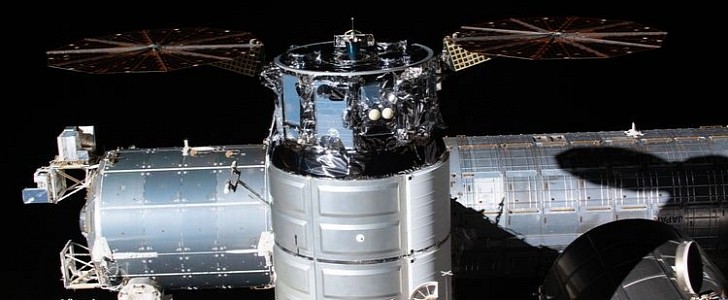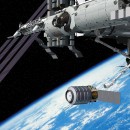As most space junkies already know, the International Space Station is slated to slap headfirst into the Earth's atmosphere sometime in the early 2030s. But we're still a pretty long way away from this day coming. Periodically, the station needs a rocket-assisted boost to keep itself locked in an orbit 250 miles (400 km) above mother Earth. This time, it was done thanks to Northrop Grumman and its Cygnus spacecraft.
Docked at the ISS since this February, this particular spacecraft successfully completed a firing of its main engine that should, in theory, keep the ISS as closed to its assigned orbit as possible. When the time comes to finally sunset the most successful spacecraft in human history, global space agencies will simply skip this critical engine burn. Thus condemning the ISS to a watery grave, likely in the Pacific Ocean. At least, whatever pieces of it manage to survive re-entry.
"This reboost of the ISS using Cygnus adds a critical capability to help maintain and support the space station," stated Steve Krein, vice president, civil and commercial space, tactical space systems at Northrop Grumman. "It also demonstrates the enormous capability Cygnus offers the ISS and future space exploration efforts."
Over 100,000 pounds of cargo and equipment have been sent to ISS crews via Northrop Grumman's Cygnus since its maiden flight in September 2013. The type is expected to serve with NASA, the ESA, and perhaps even the private sector well into the late 2020s and possibly even beyond. Currently, the ISS is still a primary global hub for space-based scientific research and experimentation.
With manned missions to the Moon and Mars on the horizon, it will be at least a little while longer before the ISS goes the way of Mir and Skylab. Estimates put the final crewed missions to the station to end by at least 2028, with the final dance with the atmosphere coming a few years later.
"This reboost of the ISS using Cygnus adds a critical capability to help maintain and support the space station," stated Steve Krein, vice president, civil and commercial space, tactical space systems at Northrop Grumman. "It also demonstrates the enormous capability Cygnus offers the ISS and future space exploration efforts."
Over 100,000 pounds of cargo and equipment have been sent to ISS crews via Northrop Grumman's Cygnus since its maiden flight in September 2013. The type is expected to serve with NASA, the ESA, and perhaps even the private sector well into the late 2020s and possibly even beyond. Currently, the ISS is still a primary global hub for space-based scientific research and experimentation.
With manned missions to the Moon and Mars on the horizon, it will be at least a little while longer before the ISS goes the way of Mir and Skylab. Estimates put the final crewed missions to the station to end by at least 2028, with the final dance with the atmosphere coming a few years later.





